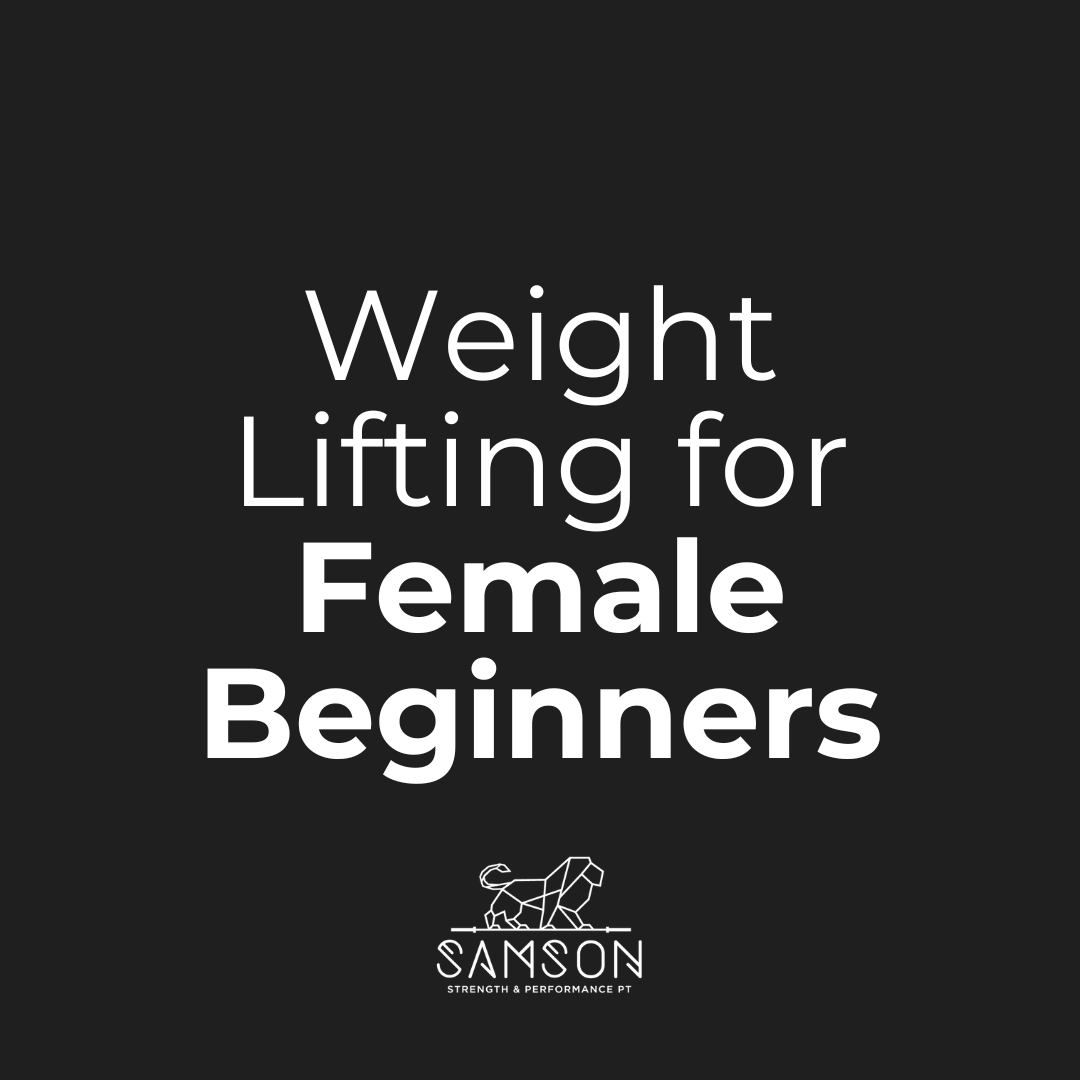Weight Lifting for Female Beginners
Physical Activity Guidelines
The CDC now recommends physical activity guidelines for both aerobic AND muscle strengthening activities.
Here are the recommendations straight off of the CDC website:
Adults need at least 150 minutes of moderate-intensity physical activity a week, such as 30 minutes a day, 5 days a week.
Adults also need 2 days of muscle-strengthening activity each week.
BUT only 20% of women 18 and older met those guidelines - which only include 2 days of strength training per week.
The percentage of women who met the guidelines for both physical activities also decreases with age.
Here are the associated percentages of women who meet both guidelines:
28.7% of those aged 18–34
22.7% of those aged 35–49
17.6% of those aged 50–64
10.8% of those aged 65 and over.
These numbers are alarming! With all of the recent research on strength training suggesting benefits such as: decrease in menopausal symptoms, increase in bone mass density, increase in energy, improved quality of sleep, and decreased blood pressure. Not to mention, the obvious benefit of being stronger.
BUT how do you get started when you have never even thought about strength training before? This is a common question I get online and in-person with my clients. I have crossed paths with so many women who are ready to learn to lift, but aren’t sure where to begin. They know they don’t want to go to a gym or join group classes, but they are not sure what to do at home.
Questions about Weight Lifting for Female Beginners:
What are the best weight lifting exercises for female beginners?
How many times a week should I strength train if I am a beginner?
What movements should I do?
How many sets and reps?
How do I structure my workouts?
In this blog, I will teach you everything you need to know about weight lifting for female beginners. I will discuss the frequency and duration of workouts, and how to structure your workouts for the best results.
What are the best weight lifting exercises for female beginners?
Here’s my list of the best weight lifting exercises for female beginners:
Squat
Hinge
Upper Body Push
Upper Body Pull
Single Leg Variation
Carry
This list is the same for anyone focused on longevity and sustainability of training to enjoy life. Next, we will go into each of these and explore when you should do them, how often and how many sets and reps to get the most out of your strength training.
Squats:
Focused on the front of the thigh as a prime mover, but functionally includes the entire leg, core, back, and glutes. Squat variations can include: box squats, goblet squats, dumbbell front squats, cyclist squats, front squats, and back squats.
Hinge:
Focused on the back of the thigh as prime movers, but functionally includes the entire leg, core, back, and glutes. Hinge variations can include: good mornings, Romanian deadlifts, conventional deadlifts, sumo deadlifts, and back extensions.
Upper Body Push:
This can be either horizontal (bench press) or vertical (overhead press) and mainly focuses on chest, shoulders, and triceps.
Upper Body Pull:
This can be either horizontal (rows) or vertical (pull-ups or lat pull downs) and mainly focuses on upper back, lats, and biceps.
Single Leg Variations:
These are either squat or hinge biased and have an added bonus of working on balance.
Carries:
Carry variations typically work on grip and core stability, but can also incorporate shoulder stability, ankle stability, and endurance.
I would also include rotational and lateral movements in a longevity focused program.
How many times a week should I strength train?
In a review article in the Journal of Mid-life Health, it was found that strength training only 2 times per week, but at 80% of total effort (80% of a 1 rep max) was sufficient stimulus for bone mineral density changes. This suggests that maximal load and NOT load frequency, is most relevant in bone mineral density changes.
In fact, anecdotally, I have seen women increase strength with only one session per week, but the effort level was high and the clients were motivated and had started with no experience. I have a client that went from deadlifting 13 pounds from an elevated surface to deadlifting 100 pounds from the ground for multiple reps within 12 months with strength training only 1 day per week.
Honestly, I encourage women without any experience to begin with strength training 1-2 times per week. Consistency is key, so if you can only strength train one time per week, then start there. Depending on the schedule and preferences of the woman, I would then suggest lifting 2 times per week at a minimum and 3 times per week in an ideal world.
How many movements should I do?
If you take a look at my list of the best exercises for weight lifting for female beginners, ideally these would be incorporated into your routine weekly. Knowing this and the number of days per week you can commit to strength training, you would split the movements into 2 or 3 days. If you are only training 1 day per week to begin, you will still want to split the movements as if you are lifting 2 days and then alternate from week to week. Here’s what I mean…
My list of exercises can be broken down into 2 lower body movements, 2 upper body movements, and 2 accessory movements.
If you are breaking them into 2 days, it could look like this:
Day 1:
Squat
Upper Body Push
Single Leg Variation
Day 2:
Hinge
Upper Body Pull
Carry
If you are breaking them into 3 days, it could look like this:
Day 1:
Squat
Upper Body Push
Day 2:
Hinge
Upper Body Pull
Day 3:
Single Leg Variation
Carry
There are several ways to break this up, but in general, I like to pair a lower body exercise with an upper body exercise when the focus is longevity. That way, you get a full body workout each day.
How many sets and reps?
As for sets and reps, I like to start my clients with 3 sets of anywhere between 8 and 15 reps. In the beginning, I like to focus on reps of 15 to dial in the motor coordination and because I find many of my beginner clients are not used to a higher output or maximal loading.
As you get comfortable with pushing your efforts, reps can be lowered. In fact, one study found that only 3 sets of 8 reps was sufficient to increase bone mineral density, but these women were lifting at 80% of their one rep max.
How do I structure my workouts?
I typically structure my workouts as follows:
General increase in bloodflow: bike, run, dynamic warm ups
Specific warm up: rehab exercises, any movements or mobilizations that prime you for the main lift that day
Main lift(s) - relatively heavy (this can depend on the rep scheme, how you feel that day, etc) with 1-2 minutes of rest between sets
Cooldown stretches with deep breathing to down-regulate the nervous system
Feeling stuck and want help?
If you’re finding it hard to start, finding an in-person program can make a big difference. At Samson Strength and Performance PT, we specialize in helping women find their strength with semi-private personal training led by a doctor of physical therapy. Dr. Delilah also offers online remote coaching options and tons of free resources in her newsletter. You can sign up for her newsletter below.
References:
Adult Activity: An Overview. https://www.cdc.gov/physical-activity-basics/guidelines/adults.html
Hejazi K, Askari R, Hofmeister M. Effects of physical exercise on bone mineral density in older postmenopausal women: a systematic review and meta-analysis of randomized controlled trials. Arch Osteoporos. 2022 Jul 27;17(1):102. doi: 10.1007/s11657-022-01140-7. PMID: 35896850.
Next on your reading list:

